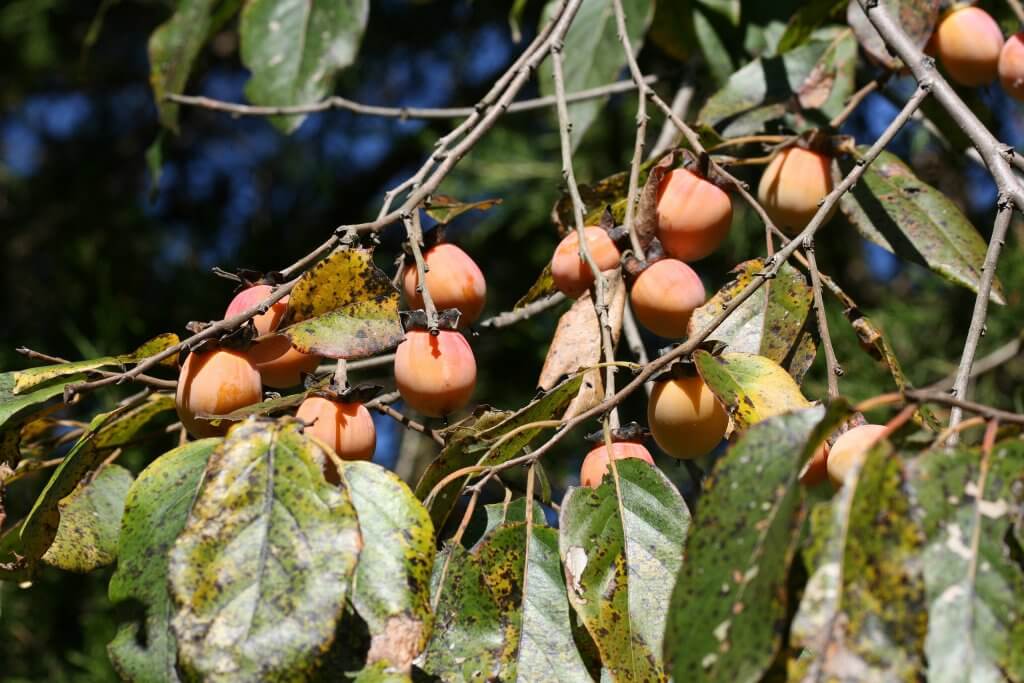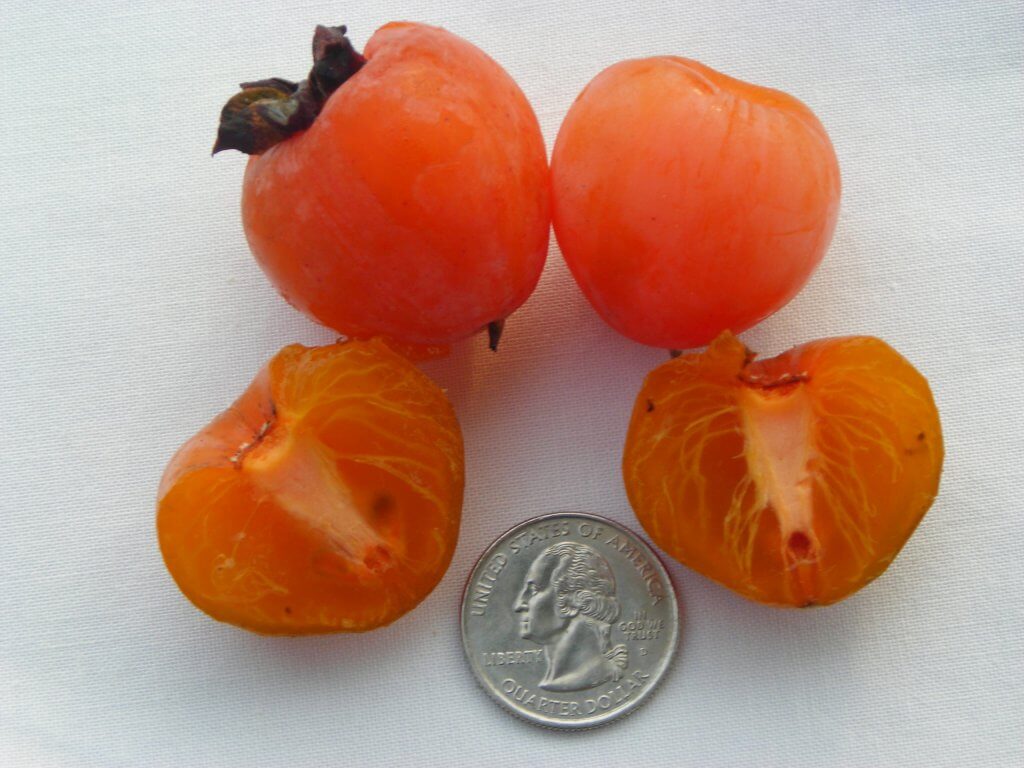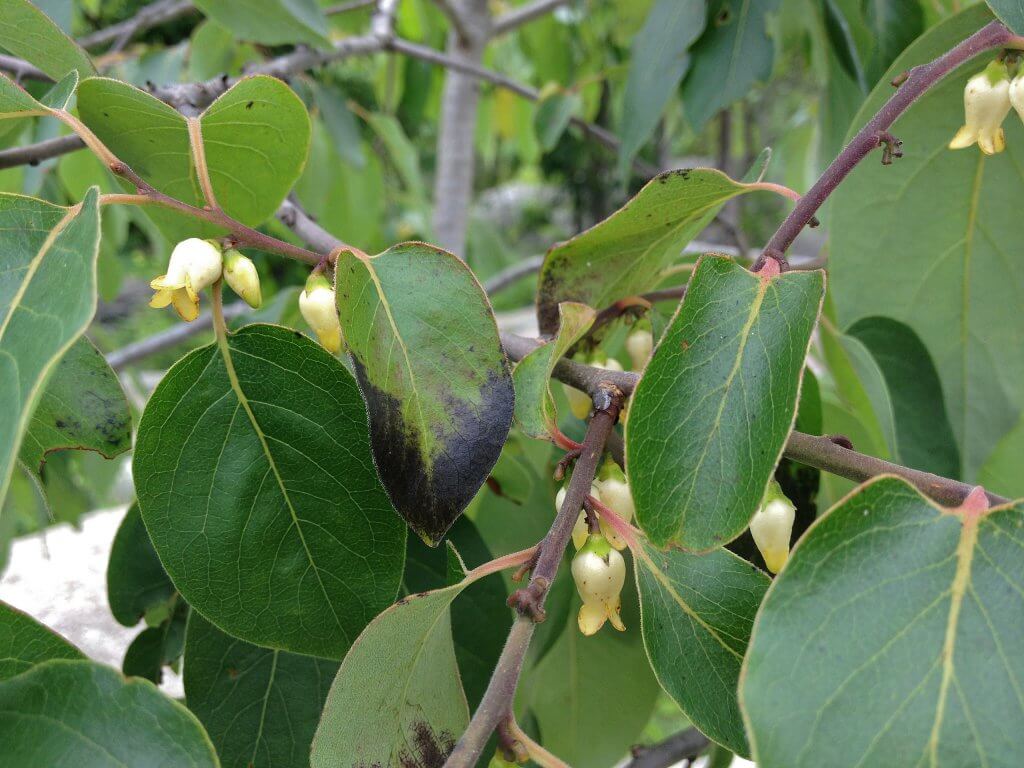Persimmon (Diospyros virginiana), is a tree that many may already be familiar with. A native to the forests and woodlands of northeastern and midwestern states. You may often hear it being referred to as American persimmon, eastern persimmon or even possum apples.
The tree is deciduous, losing its leaves in winter and leaving only the bright orange, plum like fruits. It can grow to heights of 20m, with a slender trunk tiled with bark that could resemble chunky dragon scales. The leaves are simple and oval shaped, with smooth edging and a slight sheen to the upper side. When flowering in spring, small clusters of chunky white blossoms coat the tree.

The fruits are quite small, roughly 5cm, and are round with a slightly squashed shape. They can often contain up to 8 seeds, although some fruits will contain none. The sepals of the flowers are still visible at the top of the fruit, forming a circular arrangement that can help in identification. It grows best in full sun to partial shade, to allow the fruits to fully ripen.
Another native persimmon called the Texas persimmon (Diospyros texana), can be found mainly in southeastern states, particularly Oklahoma and of course Texas. Instead of a bright red/orange, the fruits of the Texas persimmon are black but still perfectly edible and sweet.
Edible parts and other uses
The fruits are usually considered the only edible part of the American persimmon. However some foragers have been able to create a tea with the leaves and even coffee using ground seeds. They are a popular ingredient in pies, puddings and other desserts, particularly in the midwestern states where they grow in abundance. Their taste is sweet, with hints of other tropical fruits, such as mango and peach.
Other persimmon species are commonly cultivated for supermarket distribution, particularly in Asia where they are very popular. The Japanese persimmon (Diospyros kaki), is considered to be the most widely cultivated species, with fruit farmers now growing it California and parts of Europe. The wild American persimmon, is slightly smaller in size, however it still has the sweet, tangy taste.

Cautions
Persimmons have been shown to possibly reduce blood pressure, so care should be taken if you are already taken special medicine for this.
Persimmons are easy to recognise, as they are one of the only fruits still clinging to trees in winter. However be sure you have correctly identified the fruit before eating.
Foraging
A perfect fruit to forage after the usual fruit crops have disappeared, persimmon, like the hackberry, can be foraged in early winter. Pick the fruits just as they appear to be wrinkling, as they should then be fully ripened. The more unripe a persimmon the higher the number of astringent compounds. So if they are not quite ripe, the puckering of your mouth will let you know when you take a test bite!
Be sure not to leave it too long before you check your local persimmon trees. Possums are particularly fond of the fruits, so there may not be many left by the time you arrive!
Did you know…
Archaeological evidence has found that persimmons have been cultivated for centuries by Native Americans. They recognised them as an important and nutritious food source, and also their properties as an astringent.

Conclusion
High in vitamin C and other beneficial nutrients, the persimmon is a fantastic fruit to forage on a cold winter walk. As a native plant, although they are not considered endangered, make sure not to over harvest a tree, as local wildlife will likely rely on the fruits. A persimmon tree can reach fruiting maturity at around 3-6 years, so its definitely a native edible that you could consider growing on your own land or back yard for a more local supply!
—————Written by Hannah Sweet
Hannah is a freelance writer and graphic designer from the UK. With a penchant for travelling, photography and all things botanical, she enjoys writing about a wealth of topics and issues, from conservation and slow living, to design and travel. Learn more about her writing and design services at www.sweetmeanders.co
Many of our readers find that subscribing to Eat The Planet is the best way to make sure they don't miss any of our valuable information about wild edibles.
See our privacy policy for more information about ads on this site






